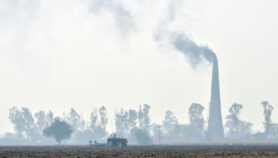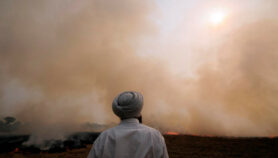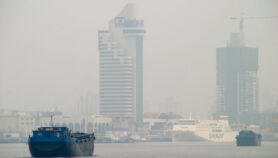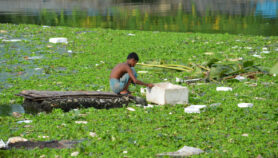18/08/22
Nepal has ‘world’s highest’ lung disease death rate

By: Sanjeet Bagcchi
Send to a friend
The details you provide on this page will not be used to send unsolicited email, and will not be sold to a 3rd party. See privacy policy.
[NEW DELHI] Nepal has the world’s highest age-adjusted death rate for chronic lung disease at 182.5 per 100,000 population, with more than 3,000 years lost to ill health or disability from the condition, according to an international study.
Nearly all cases of chronic obstructive pulmonary disease (COPD) are environmental in origin, says Jay Kaufman, an author of the study and professor at the Department of Epidemiology, Biostatistics and Occupational Health at McGill University in Montréal, Canada.
“Given the expense and complexity of medical interventions, the best hope for [poorer Asian] countries lies in primary prevention, which means reducing tobacco use and replacing dangerous indoor combustion sources with safer, less polluting modern stoves”
Jay Kaufman, McGill University
Chronic obstructive pulmonary disease (COPD) is a group of diseases that lead to blockage in airflow and problems relating to breathing. It includes conditions like chronic bronchitis and emphysema.
In the context of poorer Asian countries, the main causes of chronic obstructive pulmonary disease are smoking, indoor air pollution from cooking and heating, and outdoor air pollution, Kaufman tells SciDev.Net. “The very high COPD death rates in these countries also speak to the limited access to medical interventions that might improve survival of those with COPD,” he says.
According to the study, in 2019, the national age-standardised death and disability-adjusted life years (DALY) rate of COPD ranged from 178 to 3,318 patients per 100, 000. DALY is a time-based measure that combines years of life lost due to premature mortality and years of healthy life lost due to disability.
The highest rates were seen in Nepal (3,318), Papua New Guinea (2,903), and the Solomon Islands (2,179) whereas the lowest rates were in Barbados (178), Antigua and Barbuda (178) and Peru (190).
The authors found that Nepal had the highest death rate from COPD caused by air pollution with 26 per cent of COPD deaths caused by exposure to this risk factor. With Nepal’s rapid urbanisation, the use of motorised vehicles increased from nearly 224,000 in 1990 to 1.3 million in 2012. The country has failed to effectively regulate air pollutants and implement air quality control measures, the authors said.
Published in The BMJ, the study looked at data related to COPD from 204 countries and territories between 1990 and 2019.
“In 2019, 212.3 million prevalent cases of COPD were reported globally, with COPD accounting for 3.3 million deaths,” the study said. “The burden of COPD reaches its peak in older adults.”
The overall incidence of COPD is likely to be just the tip of an iceberg as most patients seek medical help only when they have substantial symptoms, says Sushmita Roychowdhury, director of pulmonology at the Fortis Hospital in Kolkata, India.
To tackle COPD in developing countries such as Nepal, Roychowdhury recommends annual mandatory spirometry test [a common test used to assess how well the lungs are working] for all above the age of 40. “It will not only unearth many more cases but help diagnose and treat early.”
“Given the expense and complexity of medical interventions, the best hope for [poorer Asian] countries lies in primary prevention, which means reducing tobacco use and replacing dangerous indoor combustion sources with safer, less polluting modern stoves,” says Kaufman.
“Although Nepal generates much of its electricity from clean hydroelectric sources, it suffers from high levels of air pollution from the burning of garbage and biomass and from road traffic. This contributes to the high burden of COPD and must be reduced.”
This piece was produced by SciDev.Net’s Asia & Pacific desk.















